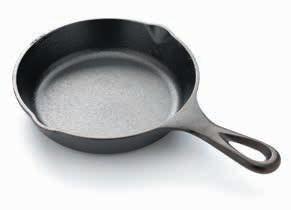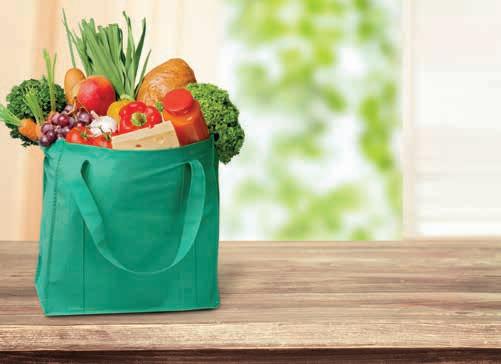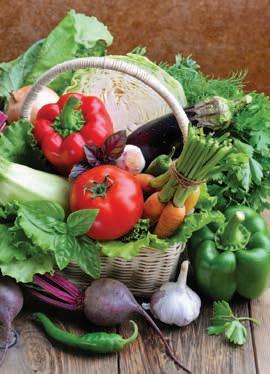
4 minute read
HEALTHY COOKWARE
How to Choose Non-Toxic Pots and Pans
by Amy Coyle
Advertisement
Organic and locally sourced foods are eco-friendly and contribute to better health, a greener world and thriving communities. However, once the food is cooked, it may no longer be as healthy, depending on the cookware used. The myriad options, from classic pots and pans to the latest modern synthetic materials, can be confusing, but there are some basic factors to watch for in choosing environmentally sound and chemical-free cookware.
Ceramic
Pure ceramic cookware is made with clay and baked in a kiln. If made in Latin America, including Mexico, such items may contain high lead levels. It’s recommended that these pieces not be used to cook, serve or store food. A kit is available to test for contaminants, if desired.
Pots and crocks derived from pure, uncontaminated clay are excellent for slow-cooking stews and sauces, particularly recipes containing acidic foods like tomato or cabbage. Cooking foods in earthenware dates back 15,000 years.
Cast Iron
For classic, durable and versatile cookware, cast iron, although heavy, will last a lifetime. While some iron can transfer to food, it’s difficult to measure and depends on the pan and the food. Naturopathic doctor Kara Fitzgerald, in Newtown, Connecticut, suggests caution. “If you have a history of iron overload (hemochromatosis), you should avoid cast iron cookware, especially for acidic foods.”
Enameled cast iron has a nonstick, porcelain coating and is unaffected by acidity. Research published in the Japanese Journal of Hygiene suggests that the risk of acute or chronic toxicity associated with the use of this cookware under normal circumstances is extremely low.
Stainless Steel
Stainless steel cookware is easy to clean and durable. It releases low levels of nickel and chromium if used to cook acidic foods, which is only a concern for those with corresponding sensitivities or allergies.
Copper
High-quality copper pots and pans have a long lifespan and heat foods evenly. They are usually lined with stainless steel or tin to prevent toxicity. The U.S. Food and Drug Administration recommends staying away from unlined copper cookware because copper can leach into acidic foods like tomatoes, fish, processed meats, grains
uckyo/AdobeStock.com and citrus fruits. When the coating starts to wear off lined copper, it’s time to replace the pot or pan.

Ceramic-Coated Aluminum
Aluminum dipped in a ceramic mixture is safe to use, but wears away over time. To preserve the surface longer, refrain from using metal utensils or scouring pads or putting it in the dishwasher. Once the coating is compromised, the cookware may be unsafe due to aluminum toxicity. Look for ceramiccoated pans that are PFA-, PFOA-, lead- and cadmium-free.
Glass
Glass cookware is a healthy option if it’s new and handled carefully. Glass is an inert material, so nothing reacts with it or leaches from it. However, it can break easily if exposed to extreme temperature changes. If any chips or cracks develop, discard it. Tefl on coating, made from polytetrafl uoroethylene, is for many consumers the goto coating for nonstick cookware, but studies show that the chemical leaks into food at high temperatures or when scratched. Prior to 2013, the “forever chemical” perfl uorooctanoic acid was used in the manufacturing process. Although discontinued aft er studies showed a possible link to cancer, older Tefl on pans and those made in foreign countries still may pose a risk. Overall, the American Cancer Society considers Tefl on safe. Caution should be used; however, once Tefl on reaches 464° F, according to the Environmental Working Group, it begins to deteriorate. At 680° F, at least six toxic gases are released which may cause fl u-like symptoms.
Still, some cooks fi nd nonstick cookware to be convenient because the surface works for most foods. “As long as the coating on your nonstick pots and pans is intact without scratches, then they should be safe to use. Nonstick cookware is budget-friendly and easy to clean,” says San Luis Obispo County, California, nutritionist and cookbook author Carrie Forrest of CleanEatingKitchen.com.
Healthiest Choice
“Stainless steel, cast iron and ceramiccoated pans don’t fully match the old-style nonstick ease, but are much better for you,” says kitchenware product researcher and designer Adam Heck, creator of Th eGood LifeDesigns.com, in Toms River, New Jersey.
“Grab a nonstick ceramic pan and use it only for busy days or super-delicate foods …. with proper care, you can enjoy years of use. Th en, grab cast iron or stainless steel for everything else,” suggests Forrest. In the fi nal analysis, the best cookware choice may be a variety of pots and pans for diff erent meals and varied health concerns.
Amy Coyle is a freelance writer in Wynnewood, Pennsylvania.









